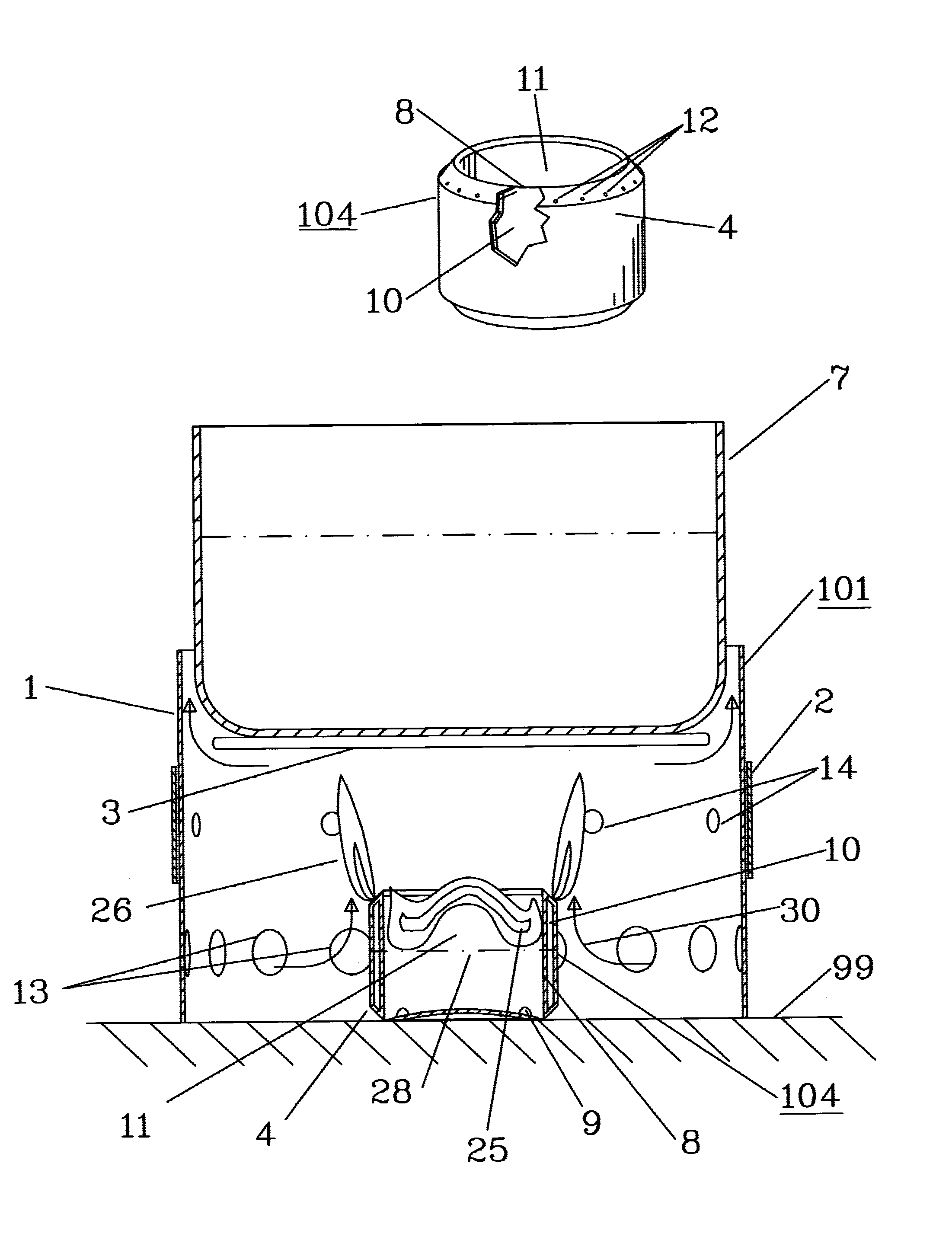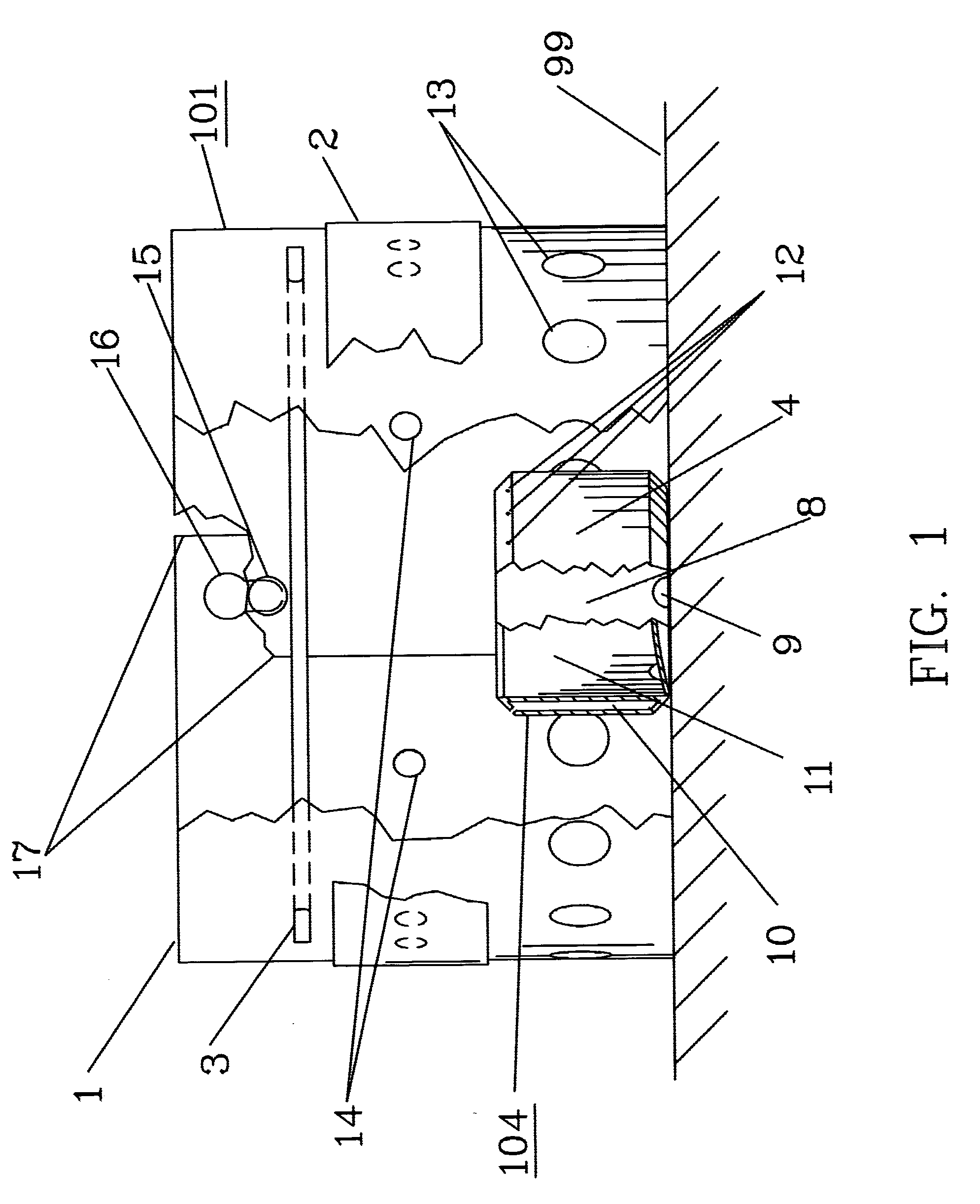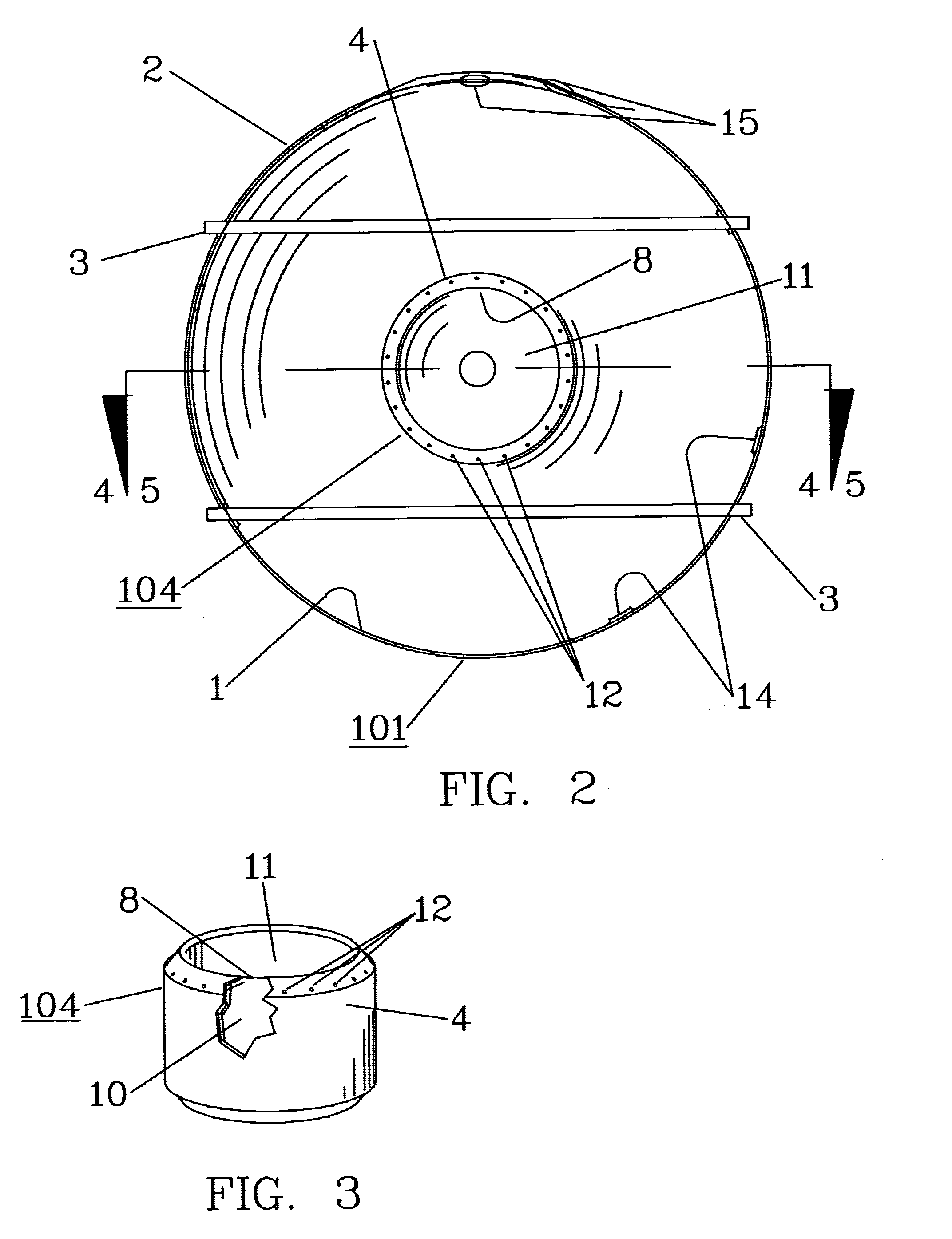Lightweight, portable cooking stove
a portable, small technology, applied in the direction of domestic stoves or ranges, gaseous heating fuel, combustion types, etc., can solve the problems of limited popularity of alcohol-fueled stoves in the united states, poor overall performance, etc., to prevent the uneven distribution of heat, convenient, safe and simple, and convenient to operate
- Summary
- Abstract
- Description
- Claims
- Application Information
AI Technical Summary
Benefits of technology
Problems solved by technology
Method used
Image
Examples
Embodiment Construction
8.1 General Configuration and Assembly
[0051]FIG. 1 shows a cutaway, elevation view of the preferred embodiment of the assembled stove. FIG. 2 shows a plan view of the preferred embodiment of the assembled stove. FIG. 3 shows a perspective view of the preferred embodiment of the fuel vaporizer.
[0052]The preferred embodiment of the current invention includes a combustion chamber 101 which comprises a cylindrical wall 1 approximately six inches in diameter and four inches in height. This cylindrical wall 1 is formed from a thin sheet of aluminum, approximately ten-thousandths of one inch thick, being rolled into a cylinder and attached together at the ends 17. The ends 17 are attached by means of rivets 15 that slide into keyhole slots 16. The combustion chamber 101 is intended to alternately sit upon a base or a supporting surface 99 such that the bottom of the combustion chamber is fully closed and sealed off from the air.
[0053]The combustion chamber cylindrical wall 1 is perforated ...
PUM
 Login to View More
Login to View More Abstract
Description
Claims
Application Information
 Login to View More
Login to View More - R&D
- Intellectual Property
- Life Sciences
- Materials
- Tech Scout
- Unparalleled Data Quality
- Higher Quality Content
- 60% Fewer Hallucinations
Browse by: Latest US Patents, China's latest patents, Technical Efficacy Thesaurus, Application Domain, Technology Topic, Popular Technical Reports.
© 2025 PatSnap. All rights reserved.Legal|Privacy policy|Modern Slavery Act Transparency Statement|Sitemap|About US| Contact US: help@patsnap.com



